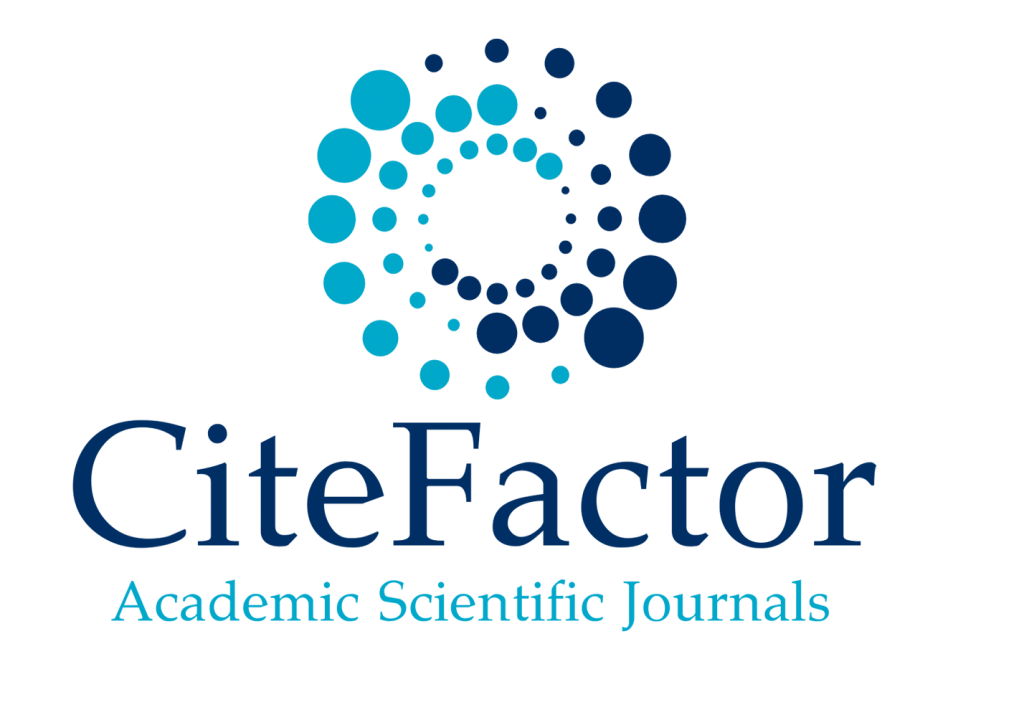Assessing the Impact of the Work from Home Phenomena on Employee Productivity in Clinton Health Access Initiative (CHAI), Zambia During the COVID-19 Pandemic
1Chavwaluka E. Musonda, 2Chrine C. Hapompwe
1,2Graduate School of Business, University of Zambia 10101 Great East Road Campus, Lusaka, Zambia
https://doi.org/10.47191/jefms/v8-i4-15ABSTRACT:
The COVID-19 pandemic in 2019 prompted major changes to social life leading to lockdowns and organisations having employees work from home to ensure social distancing. Between 2020 and 2021, the Clinton Health Access Initiative (CHAI) implemented the work-from-home policy. A study was conducted to determine the impact of CHAI's work-from-home policy on employee productivity. A questionnaire adapted from previous studies was used to collect quantitative data from all 51 CHAI employees in the district who worked at CHAI during the COVID-19 pandemic. A Google link was sent to their email addresses and mobile phones; 40 responded, representing a 78% response rate. The study found that working from home positively influenced employee productivity with most respondents 16 (40%) and 13 (32.5%) strongly agreeing that it was more effective to work from home during the pandemic. 18 respondents (45%) agreed, and 18 respondents (45%) strongly agreed that they worked longer hours and completed tasks more quickly from home as opposed to in an office. Household characteristics had a significant correlation with productivity. Designated workspace (p=0.007) and comfortable furniture (p=0.021) while the number of people in the household had (p=0.018). Organisational support through the provision of equipment by the organisation (p=0.042) and easy access to work documents (p=0.043) was significantly associated with employee productivity. The study concluded that employees’ productivity was positively impacted by working from home. Household characteristics equally had a significant impact on productivity as did organisational support. All three independent variables had a significant impact on remote work productivity during COVID-19. The findings of this study confirmed the null hypotheses that the work from home directive did increase employee productivity. As part of organisational support for their employees, the study recommends that organisation develop a contingency plan and encourage training and skill development that gives employees familiarity with digital tools. Employees should also ensure that their homes are comfortable for remote working. Implications of the study findings underscore the importance of organisational adaptability in planning for flexible working policies. Providing the resources required for employees to work remotely and prioritizing employee mental wellness.
KEYWORDS:
Work from Home, COVID-19, Household Characteristics, Organisational Support.
REFERENCES:
1) Aczel, B., Kovacs, M., Lippe, T. v. d. & Szaszi, B., 2020. Researchers working from home: Benefits and challenges, Utrecht: Utrecht University.
2) Ahmed, F. & Farooqi, Z., 2020. Working from home's impact on job Performance in the IT Sector, Linkoping: Linkoping University.
3) Amofa, A. K., Yawson, M. D. T.-A. & Okronipa, G. A., 2016. The Effect of the Physical Office Environment on Employee Productivity: The Case of Some Selected Banks in the Sekondi-Takoradi Metropolis, Ghana. Africa Development and Resources Research Institute (ADRRI), 25(4 (3)), pp. 26-28.
4) Anne, M. F., 2021. The Performance Technologist's Toolbox: Case Studies, Chicago: St. John's University.
5) AttendanceBot, 2021. AttendanceBot. [Online]
6) Available at: https://www.attendancebot.com/blog/hr-dilemma-can-hr-work-from-home/
7) [Accessed 27 March 2021].
8) Awadaa, M., Lucasb, G., Becerik-Gerbera, B. & Roll, S., 2021. Working from home during the COVID-19 Pandemic: Impact on office worker Productivity and work Experience. Work 69, 4(1), pp. 1171-1189.
9) Azzam, A.-M., 2015. The Role of Organizational Support in Improving Employees Performance. International Business Research, 8(2), p. 198.
10) Bairoliya, N. & Imrohoroglu, A., 2020. Macroeconomic Consequences of Stay-At-Home Policies During the COVID-19 Pandemic, Los Angeles: Department of Finance and Business Economics University of Southern California.
11) Baker, E., Gayle C, A. & Crawford, J., 2007. Satisfaction and Perceived Productivity when Professinals Work from Home. Research and Practice in Human Resource Management, pp. 37-62.
12) Baker, E., Gayle C, A. & Crawford, J., 2007. Satisfaction and Perceived Productivity when Professionals Work From Home. Research and Practice in Human Resource Mangament, pp. 37-62.
13) Bao, L. et al., 2020. How does Working from Home Affect Developer Productivity? - A case Study of Baidu During COVID-19 Pandemic. New York, s.n.
14) Binu, G., 2021. Sampling Theory. International Research Journal of Modernization in Engineering Technology and Science, 3(6).
15) Bloom, N., Liang, J., Roberrts, J. & Ying, Z. J., 2015. Does working from home work evidence from a Chinese Experiment. Oxford Journals, 5(32), pp. 15-17.
16) Bloom, N., Liang, J., Roberts, J. & Ying, Z. J., 2015. Does Working form Home Work? Evidence from a Chinese Experiment. Oxford Journals, pp. 165-200.
17) Bolisani, E. S. E., Ipsen, C., Kircher, K. & Hansen, J. P., 2020. Working from home during COVID-19 pandemic: Lessons learned and issues. Management &Marketing, 15(1), pp. 458-476.
18) Bonache, J. & Festing, M., 2020. Research paradigms in international human resource management: An epistemological systematisation of the field.. German Journal of Human Resource Management, 32(2), pp. 99-123.
19) Cambridge Dictionary, 2022. Definition of Household, London: Cambridge Univsrsity Press.
20) Carillo, K. et al., 2020. Adjusting to epidemic-induced telework: empirical insights from teleworkers in France. European Journal of Information Systems.
21) Chua, S. j. L., Ali, A. S. & Lim, M. E. L., 2016. Physical Environment Comfort Impacts on Office Employee's Performance. Kuala Lumpur, EDP Sciences.
22) Chung, G. K.-K. et al., 2023. Socioeconomic inequality in the worsening of psychosocial wellbeing via disrupted social conditions during COVID-19 among adolescents in Hong Kong: self-resilience matters. Frontiers in Public Health, Volume 11.
23) Churches Health Association of Zambia, 2020. Report on Impact of COVID-19 on CHAZ sub recipients (SR) Programme Implementation, Lusaka: Churches Association of Zambia.
24) Conrad, P., 2001. Health Research, Qualitative. International Encyclopedia of the Social and Behavioral Sciences, pp. 6608-6612.
25) Craig, L. & Churchill, B., 2020. Working and Caring at Home: Gender Differences in the Effects of COVID-19 in paid and unpaid Labour in Australia. Feminists Economics, pp. 2-17.
26) Cramer, D. a. D. H., 2004. https://libguides.usc.edu/writingguide/variables#:~:text=Dependent%20Variable,It%20is%20the%20presumed%20
effect.. [Online] Available at: URL: https://libguides.usc.edu/writingguide[Accessed 09 September 2024].
27) Daraba, D., Wirawan, H., Salam, R. & Faisal, M., 2020. Working from home during the corona pandemic: Investigating the role of authentic leadership, psychological capital and gender on employee performance. Cogent Business and Management, 8(1), pp. 140-169.
28) Dawson, R. H., Bob, A. & Jae, H. L., 2021. Doing Case Study Research- A practical guide for begining researchers. 4 ed. New York: Teachers College Press.
29) Dubey, A. & Trpathi, S., 2020. Analysing the sentiments towards Work-From-Home Experince during COVID-19 Pandemic. Journal of Innovation Management, 5(12), pp. 13-19.
30) Eisenberger, R., Huntington, R., Hutchison, S. & Sowa, D., 1986. Perceived organizational support, s.l.: Journal of Applied Psychology.
31) Eisenberger, R., Malone, P. G. & Presson, D. W., 2016. Optimizing Perceived Organizational Support to Enhance Employee Engagement, Houston: University of Houston.
32) Etheridge, B., Wang, Y. & Tnag, L., 2020. Worker Productivity during Lockdown and Working from Home: Evidence from Self-Reports, Colchester: Institute For Social & Economic Research.
33) Felstead, A. & Henseke, G., 2017. Assessing the growth of remote working and its consequences for effort, well-being and work-life balance, s.l.: published by Brian Towers (BRITOW) and John Wiley & Sons Ltd.
34) Galanti, T. et al., 2021. Work from Home During the COVID-19 Outbreak-The Impact on Employees' Remote Work Productivity, Engagement and Stree. Journal of Occupational and Environmental Medicine, 63(7), pp. 426-429.
35) Glen, S., 2022. Statistic How To, Florida: Media Associates.
36) Guler, M. A. M., Guler, K. P., Guneser Gulec, M. M. & Ozdoglar, E. P., 2021. Investigation of the Impact of COVID-19 on Employee Health and Productivity. Journal of Occupational and Environmental Medicine, 63(9), pp. 731-741.
37) Halim, b. A. & Hasnita, b. H., 2017. Determining Sample Size for Research Activities: The Case of Organizational Research. Selangor Business Review, 2(1), pp. 20-34.
38) Hamilton, E., 2019. Bringing Work Home- The advantages and challenges of Telecommuting, Boston: Boston College, The Centre for Work and Family.
39) Hassan, M., 2022. Case Study – Methods, Examples and Guide, s.l.: Researchmethod.net.
40) Hitesh, B., 2020. Organization-Definition, Meaning and Types of Organizations, s.l.: Marketing91.
41) Hussain, T., Wang, D. & Li, B., 2023. Psychological Resilience of athletes during the COVID-19 Pandemic: A qualitative insight. Acta Psychologica, p. 240.
42) International Labour Organization, 2020. An employer's guide on working from home in response to the outbreak of COVID-19, Geneva: International Labour Organization.
43) Ishak, M. & Bakar, A. Y. A., 2014. Developing Sampling Framework for Case Study: Challenges and Conditions. World Journal of Education, 4(3), p. 29.
44) Jaiswal, A. & Joe, A., 2020. Unlocking the COVID-19 Lockdown: Work from Home and its Impact on Employees. Illilanois: Research Square .
45) Josephine, S. F. C. et al., 2022. Teleworking from home experiences during the COVID-19 pandemic among public health workers. National Library of Medicine, 22(674).
46) Kaushik, M. & Guleria, N., 2020. The impact of Pandemic COVID-19 in Workplace. The European Jornal of Business and Management, p. 6.
47) Kazi, T. R. & Zahir, U. A., 2020. Working from home during the COVID-19 Pandemic: Satisfaction, Challenges, and Productivity of Employees. International Journal of Trade and Commerce, 9(2), pp. 282-294.
48) Kramer, A. & Kramer, Z. K., 2020. The potential impact of the Covid-19 pandemic on occupational status, work from home, and occupational mobility. Journal of Vocational Behaviour.
49) Kumar, V. G. & Janakiram, B., 2017. Theorties of Work Life-Balance-A conceptual review. Internatl Research Journal of Management and Commerce, 4(9), p. 564.
50) Li, J., Ghosh, R. & Nachmias, S., 2020. In a time of COVID-19 pandemic, stay healthy, connected, productive, and learning. Human Resource Development , pp. 199-207.
51) Lohman, L., 2023. Study.com. [Online] Available at: https://study.com/academy/lesson/case-study-design-definition-advantages-disadvantages.html#:~:text=and%20other%20disciplines.-,Case%20study%20research%20can%20be%20us
ed%20to%20develop%20new%20theories,to%20answer%20a%20research%20question.[Accessed 03 September 2024].
52) Mariana, T.-B. & Pitt, L., 2021. Mindfulness and the challenges of working from home in times of crisis. Business Horizins, 64(2), pp. 189-197.
53) Matenga, C. & Hichambwa, M., 2022. To Lockdown or Not to Lockdown: A pragmatic policy response to COVID-19 in Zambia. In: G. Mccann & N. M. P. Carmody, eds. COVID-19, The Global South and The Pandemic's Develpment impact. Bristol: Bristol University Press, pp. 149-160.
54) Meenakshi, K. & Neha, G., 2020. The Impact of Pandemic COVID-19 in Workplace. European Journal of Business and Management, 12(15), pp. 9-12.
55) Ministry Of Health, 2020. Zambia Consolidated Guidelines-2020. Lusaka: Ministry of Health.
56) Moroi, T., 2020. Quantitative and Qualitative Research and Philosophical Assumptions. s.l.:s.n.
57) Mwanza, J., 2006. Introduction to Social Research Methods: A module for first years, Lusaka: s.n.
58) Mwanza, J., 2013. Research Handbook Volume 2, Lusaka: University of Zambia.
59) Nicola, M. et al., 2020. The Socio-economic implications of the coronavirus pandemic (COVID-19): A review. International Journal of Surgery, 78(1), pp. 185-193.
60) Novitasari, D., Sasono, I. & Abari, M., 2020. Work-Family Conflict and Worker's Performance during Covid-19 Pandemic: What is the role of Readiness to Change Mentality?. International Journal of Science and Management Studies, p. 13.
61) Onyedikachi, D., 2018. Fortmi.com. [Online] Available at: https://fortmi.com/the-office-meaning-types-kinds-and-functions-of-an-office[Accessed 18 May 2022].
62) Osakwe, P., 2021. COVID-19 and the Challenge of Developing Productive Capacities in Zambia, Lusaka: United Nations Conference On Trade and Development .
63) Palumbo, R., 2020. Let me go to the office! An Investigation into the side effects of working from home on work-life balance. Inernational Journal of Public Sector Management, 33(6/7), pp. 771-790.
64) Policy Monitoring and Research Centre, 2009. PMRC Policy Analysis of the Non-Governmental Organization'a Act No. 16 f 2009, Lusaka: Policy Monitoring and Research Centre.
65) Prasad, K. & Vaidya, R. W., 2020. Association among Covid-19 parameters, occupational stress and employee performance. Sustainable Humanosphere, 16(2), p. 241.
66) QuestionPro, Survey, 2022. Conceptual Research: Definition, Framework, Example and Advantages, Dallas Texas: work press.
67) Quintão, C., Andrade, P. & Almeida, F., 2020. How to Improve the Validity and Reliability of a Case Study Approach. Journal of Interdisciplinary Studies in Education , 9(2), pp. 264-275.
68) Rahman, K. T. & Arif, Z. U., 2020. Working from Home during the COVID-19 Pandemic: Satisfaction, Challenges, and Productivity of Employees. International journal of Trade and Commerce, 9(2), pp. 282-294.
69) Ravi, N. & Anulakshmi M, R., 2021. Work from Home and Employee Productivity during COVID-19. Asian Basic and Applied Research Journal, 3(1), pp. 150-157.
70) Ravitch, S. M. & Carl, N. M., 2021. Conceptual Frameworks in Research. In: Qualitative Research. s.l.:SAGE Publication Inc, pp. 32-61.
71) Roy, B. D., 2021. Vantagecircle. [Online] Available at: https://blog.vantagecircle.com/challenges-of-hr/[Accessed 26 March 2021].
72) Savic, D., 2020. COVID-19 and Work from Home: Digital Transformation of the Workforce. The Grey Journal, 16(2), p. 134.
73) Siampondo, G. & Mweemba, A., 2023. A Review of the Work from Home Initiative during the COVID-Pandemic and its impact on customer experince in Zambia. THE INTERNATIONAL JOURNAL OF BUSINESS & MANAGEMENT, 11(6), pp. 116-120.
74) Sibbald, S. L. et al., 2021. Continuing to enhance the quality of case study methodology in health services research. Healthc Manage Forum, 34(5), p. 291–296.
75) Simulundu, E. et al., 2020. First COVID-19 case in Zambia-Comparative phylogenomic anayses of SARS-CoV-2 detected in African countries. International Journal of Infectious Diseases, p. 5.
76) Sitali, W. et al., 2022. Impact of COVID-19 on Human Resource Management Functions in Zambian Organisations. International Journal of Research and Scientific Innovation, 9(2), pp. 10-16.
77) Sopitshi, A. & Niekerk, L. V., 2017. A descriptive overview of Zambia'scountry and health system context including the opportunities for innovation, Cape Town: University of Cape Town.
78) Spurk, D. & Straub, C., 2020. Flexible employment relationships and careers in times of the COVID-19 pandemic. Journal of Vocational Behaviour.
79) Staff Writer, 2020. Reference. [Online] Available at: https://www.reference.com/world-view/theoretical-framework-5dc9afd72afb3440#:~:text=According%20to%20the%20University%20of%20Southern,framework%20to%20
craft%20a%20logical%20
argument&text=According%20to%20the%20University,craft%20a%20logical%20argument&tex[Accessed 19 July 2022].
80) Stevens, A., 2020. Five Tools to Help Your Employees Work from Home, s.l.: Jayde Online Incorporated.
81) Stone, C., Horan, S. & Flaxman, P., 2018. What does the future hold? Investigating the benefits and challenges of agile and remote working. London, City University of London.
82) Stroup, C. & Yoon, J., 2016. What Impact do Flexible Working Arrangements (FWA) have on Employee Performance and Overall Business Results?, s.l.: Cornell University.
83) Tellis, W. M., 1997. Application of a Case Study Methodology. The Qualitative Report, 3(3).
84) The NGO Act , 2009. Non-Governmental Organization's Act, 2009, Lusaka: s.n.
85) United Nations Development Programme, 2020. Mitigating the Socio-economic Impact of Covid-19 in Zambia, Lusaka: CUTS international.
86) USAID. Gov, 2021. Usaid.gov. [Online] Available at: https://www.usaid.gov/sites/default/files/documents/2021-USAID_Zambia_Partners_in_Development_Book_clrd_public_1.pdf[Accessed 11 January 2022].
87) Veldhoven, M. v., Kirchner, K. & Hansen, J. P., 2021. Six Key Advantages and Disadvantages of Working from Home in Europe during COVID-19. International Journal of Environmental Research and Public Health, 18(1), p. 1826.
88) Vyas, L. & Butakhieo, N., 2020. The impact of working from home during COVID-19 on work and life domains: an exploratory study on Hong Kong. Policy Design and Practice, p. 19.
89) Vyas, L. & Butakhieo, N., 2020. The Impact of working from home during COVID-19 on work and life domans: an exploratory study on Hong Kong. Policy Design and Practice, 2(12), pp. 13-19.
90) Wamundila, S., Siakalima, D., Haabazoka, L. & Simui, F., 2022. Impact of Covid-19 on Institutional Operations in Zambian Organisations. International Journal of Research and Scientific Innovation, 9(1), pp. 86-94.
91) Wang, B., Y. L., Qian, J. & Parker, S. K., 2021. Achieving effective remote working during the COVID-19 pandemic: A work design perspective, Bejing: Centre for Transformative Work Design, Future of Work Institute, Faculty of Business and Law, Curtin University.
92) World Health Organization, 2020. Health Topics-Coronavirus. [Online] Available at: https://www.who.int/health-topics/coronavirus#tab=tab_1[Accessed 10 March 2021].
93) World Health Organization, 2021. WHO Data Reports. [Online] Available at: https://www.who.int/data#reports[Accessed 4 March 2021].
94) World Health Organization, 2022. WHO News letter. [Online] Available at:https://www.who.int/news/item/05-05-2022-14.9-million-excess-deaths-were-associated-with-the-covid-19-pandemic-in-2020-and-2021[Accessed 16 May 2022].
95) Xiao, Y. et al., 2021. Impacts of Working from Home During COVID-19 Pandemic on Physical and Mental Well-Being of Office Workstation Users. Journal of Occupational and Environmental Medicine, 63(3), pp. 181-190.
96) Yehuda, B., 2002. Teleworking: benefits and pitfalls as perceived by professionals and managers. [Online] Available at: https://doi.org/10.1111/1468-005X.00063[Accessed 13 September 2022].
















